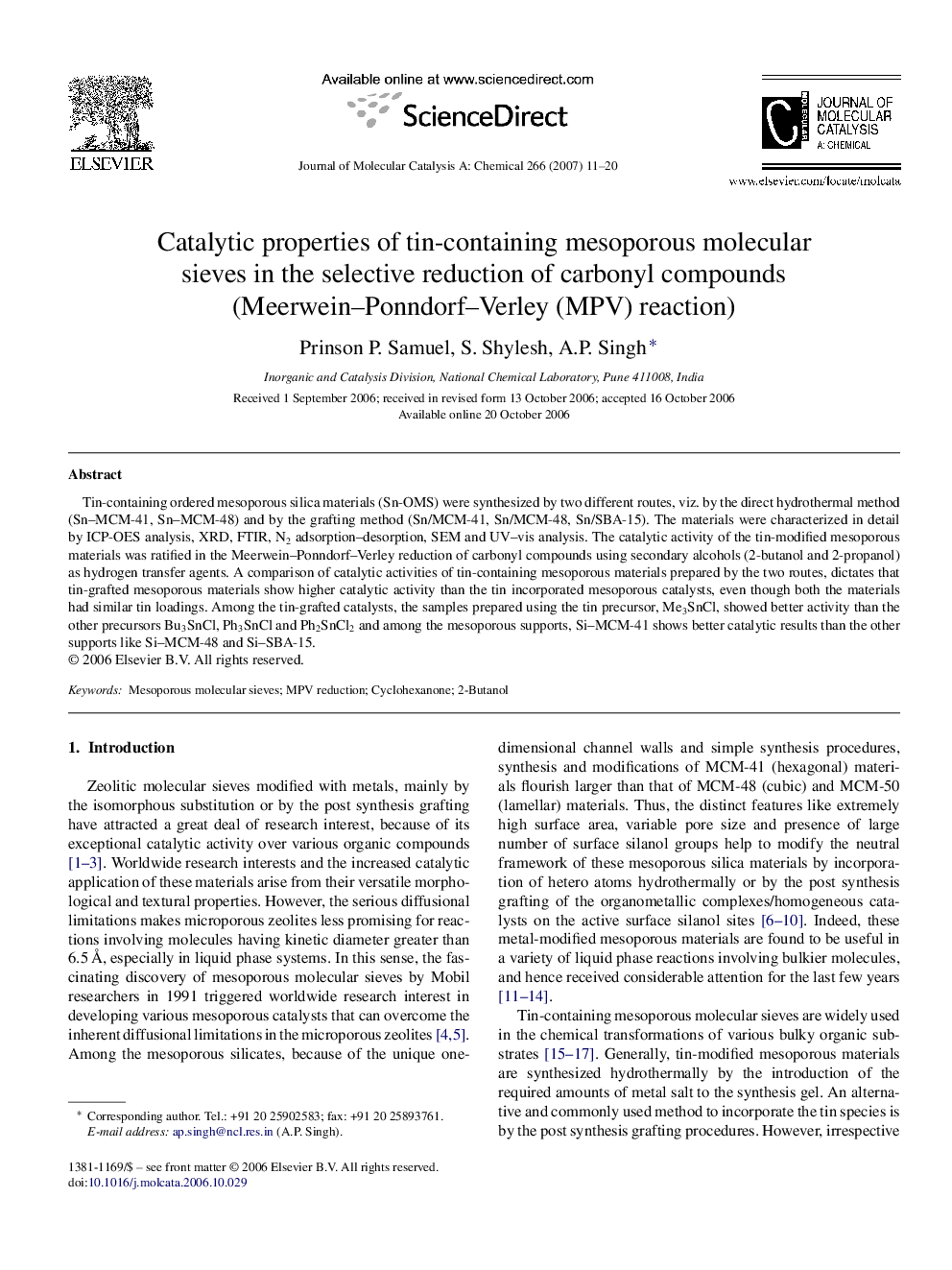| کد مقاله | کد نشریه | سال انتشار | مقاله انگلیسی | نسخه تمام متن |
|---|---|---|---|---|
| 67969 | 48500 | 2007 | 10 صفحه PDF | دانلود رایگان |

Tin-containing ordered mesoporous silica materials (Sn-OMS) were synthesized by two different routes, viz. by the direct hydrothermal method (Sn–MCM-41, Sn–MCM-48) and by the grafting method (Sn/MCM-41, Sn/MCM-48, Sn/SBA-15). The materials were characterized in detail by ICP-OES analysis, XRD, FTIR, N2 adsorption–desorption, SEM and UV–vis analysis. The catalytic activity of the tin-modified mesoporous materials was ratified in the Meerwein–Ponndorf–Verley reduction of carbonyl compounds using secondary alcohols (2-butanol and 2-propanol) as hydrogen transfer agents. A comparison of catalytic activities of tin-containing mesoporous materials prepared by the two routes, dictates that tin-grafted mesoporous materials show higher catalytic activity than the tin incorporated mesoporous catalysts, even though both the materials had similar tin loadings. Among the tin-grafted catalysts, the samples prepared using the tin precursor, Me3SnCl, showed better activity than the other precursors Bu3SnCl, Ph3SnCl and Ph2SnCl2 and among the mesoporous supports, Si–MCM-41 shows better catalytic results than the other supports like Si–MCM-48 and Si–SBA-15.
Tin-containing ordered mesoporous silica materials were synthesized by direct hydrothermal method (Sn–MCM-41, Sn–MCM-48) and by the grafting method (Sn/MCM-41, Sn/MCM-48, Sn/SBA-15) and were used as catalysts in the MPV reduction reaction of carbonyl compounds using 2-butanol and 2-propanol as hydrogen transfer agents. Figure optionsDownload as PowerPoint slide
Journal: Journal of Molecular Catalysis A: Chemical - Volume 266, Issues 1–2, 2 April 2007, Pages 11–20